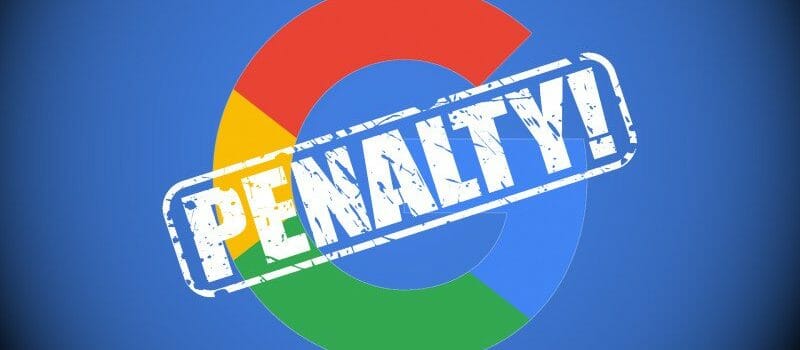Discover what a Google penalty is, why it happens to some sites and not others, as well as how to successfully make a full Google penalty recovery

It happens to many webmasters across the globe. You think you have been doing everything SEO right, even by the book. But your website traffic and search engine results performance (SERP) drops rather suddenly. You check around the interwebs and discover the big issue: Google recently released an algorithm change. It is likely that your website just got hit by a Google Penalty. It could be a Google Penguin Penalty or a Panda Penalty. Either way, it’s not a good thing and you’ll want to marshal legit Google Penguin recovery techniques to get your site back on top of SERPs.
Here’s the thing:
- The top five search results take close to 95% of all search clicks, leaving just 5% to the rest of all other rankings combined
- A 2014 Google organic search on desktops study showed CTR rate dropped from 71% to less than 6% when a site missed out on or dropped in rankings from the first page of search results.
- Ranking at the top of the first search results gets you 33% of all traffic for that search
Clearly, a drop in rankings is a real threat not only to your rankings, but also your revenue and profitability hence your ability to stay in business.
But how do you pull off a successful Google Penguin recovery when you may not even know what caused it?
Here’s what you need to do next.
1. Understand what is a Google penalty
Since April 2014, Google has occasionally rolled out Search algorithm updates and other actions that seek to root out unethical webmasters trying to game the search engine system to gain top rankings.
The tricky part is you may have followed Google Webmaster Tools Guidelines (Google Search Console) to the letter but still suffer a penalty.
The Google antispam team drops a penalty in either of two ways:
- Manual action: this is a hands-on penalty the Google antispam team will slap on your site for a specific reason
- Automated algorithm updates: naturally comes into effect when your website fails to effect renewed ranking factors
And then there are the two popular types of Google penalties:
- Panda Penalty: results from having low-quality content on your site
- Penguin Penalty: results from suspicious, black hat, and straight-out link building schemes and techniques. If low-ball backlinks or inbound links link to your site, and you remain unaware, you could be penalized and not know why it happened.
2. See why you got hit by a Panda or Google Penguin penalty
If you got a manual action against you, you may find an “unnatural links detected” notification in your Google Search Console inbox. The alert usually offers good pointers on what you need to fix.
Other times, you won’t receive a heads-up and have to dig into your site’s fabric to uncover which inbound links could be causing you trouble with Google.
Also check if the top SEOs in the industry are talking about a recent Google algorithm update, which could have automatically demoted your website rankings on PageRank.
Do follow Google’s head of SEO and the antispam team Matt Cutts Twitter page as well as Google Search Console’s YouTube Channel for more insights into new Google updates.
Algoroo and MozCast do keep a running track record of all recognizable algorithm changes so you can check with them to see what’s new and could be affecting your site so you can begin your Panda or Penguin recovery.
3. Start your Google penalty recovery
After identifying what hit you specifically, you’ll have a great head-start to recover from a manual action or algorithm update.
Recovering from a Panda penalty requires you recreate your content to make it more useful and authoritative. For example, Backlinko found the best-ranking content length in 2019 averages out at 1,890 words.
Recovering from a Penguin penalty takes a bit more work, depending on the number and intensity of unnatural backlinks you have pointing to your domain, for example. You have to conduct a manual link profile assessment, meaning assessing whether each inbound link comes from a suspicious source or blacklisted site.
If you have thousands of inbound links, this can be painstakingly slow, keeping you in the penalty sandbox until you can manage to figure which links to slap with a no-follow tag so they don’t hurt your rankings again in future.
If you keep receiving low-quality and black hat links, you can see how long and nerve-wracking a process recovering from a Penguin penalty can be.
In fact, only about 5% of webmasters are actively trying to recover from an algorithm update penalty such as Penguin or Panda because it takes a lot of work.
4. Get the help you need
But you can skip the manual labor and not knowing what to do next by using a credible Google recovery service help out. Be sure to see their portfolio, especially how many past clients and how deep they understand Google penalties.
Also, choose expert Google penalty recovery services that are experts certified by LinkResearchTools (LRT). Time to get back to your deserved top ranking on SERPs.